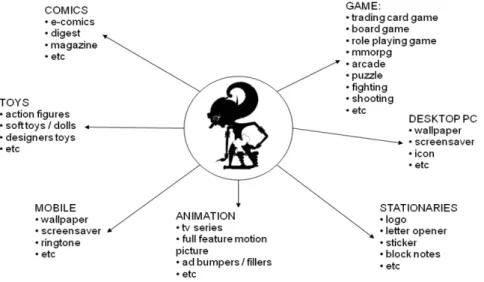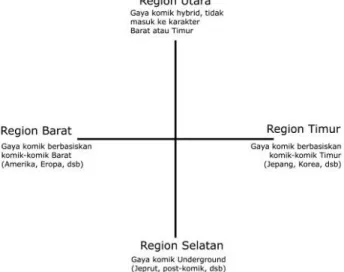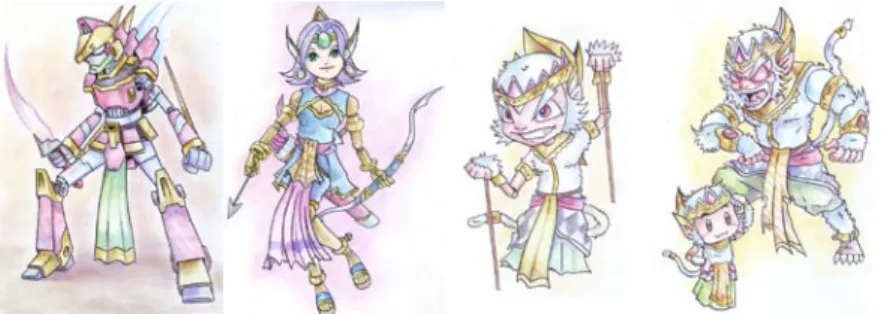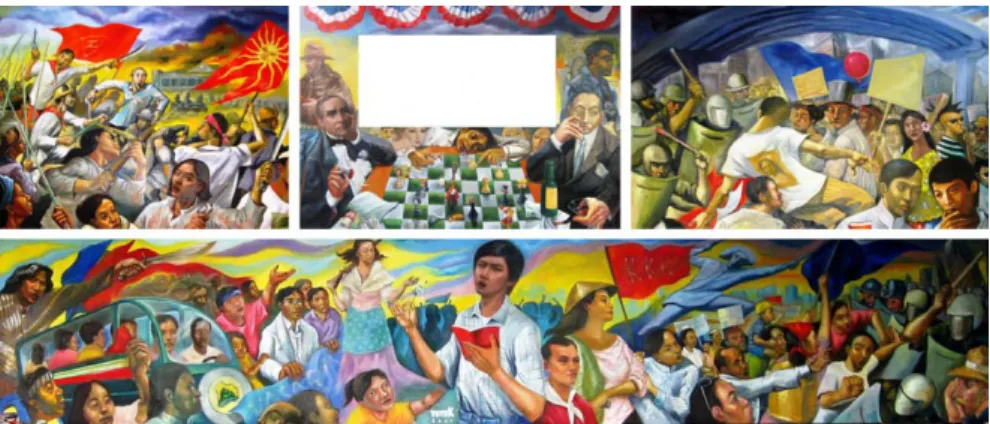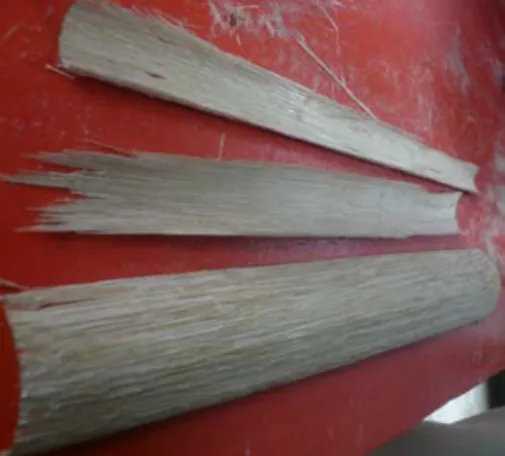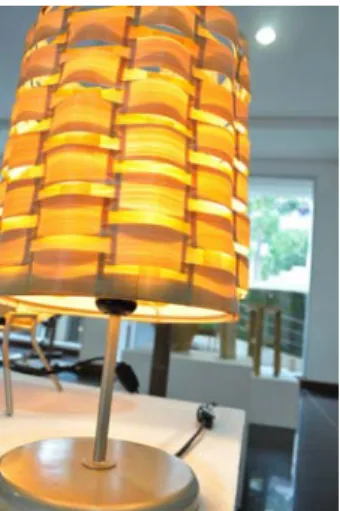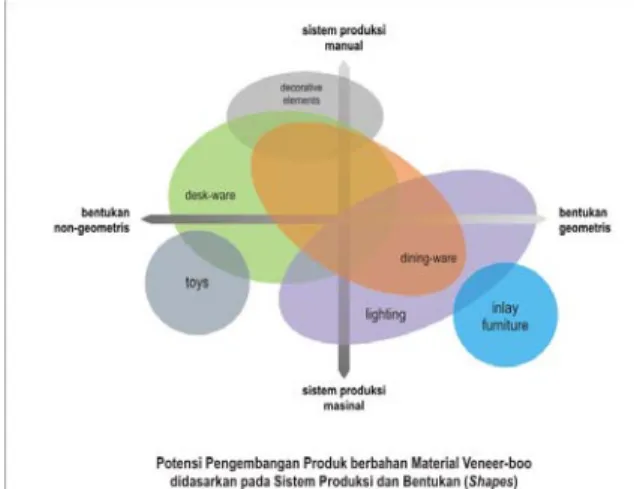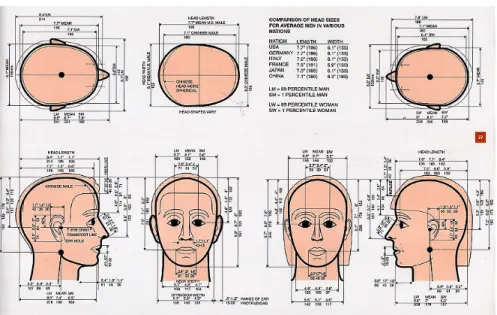International Conference Arte-Polis 3 - Creative Collaboration and Placemaking v Collaboration in the Design of New Landscape for the Mining Area in the former International Conference Arte-Polis 3 - Creative Collaboration and Intervention of Place Film ix in the Transformation of City Spaces.
Education and Theoretical Discourse on Creative Collaboration
Planning and Policy Development informed by Creative Collaboration
Community participation as a form of creative collaboration in the creation of public places: community of Sadang Serang, Bandung. Arte-Polis 3 International Conference - Creative collaboration and making place xi from zero to hero, a creative lesson from Surabaya's open spaces.
KEYNOTE AND FEATURED SPEAKERS
Culture, Arts and Design showcasing Creative Collaboration
Tales of Archipelago: Open Source Concept Design for Creative Media Development
Isa PRAMANA
ABSTRACT
INTRODUCTION
Complex Story and Overarching Narrative (Caputo, 2003), the story in manga or anime is not only the achievement of the main character's goals, but usually adds the complexity and values of the relationships between the protagonists, which is sometimes being displaced from its original purpose of the story. A similar process occurs in wayang performance, it is not the purpose of the story that matters, but the process of achieving the goals that creates the meaning of the story.
BENCHMARKING THE CONCEPT DESIGN 2.0
Second, comic is a print media that is consumed directly by the reader without any other support system or platform such as television, radio or internet. Zpalanzani (2005) said that comic is an entry media in the creative media cycle that contributes to the eternal cycle in Japan's creative industries.
TALES OF ARCHIPELAGO
A Platform of Design 2.0 in Wayang Development
The wayang characters play as the children's partner in various forms such as virtual friends, robots, animals, animated figures, and many more. Wayang in Indonesia takes various forms related to geographical origin, therefore the wayang designs for a character can form various designs and appearances as following examples.
Tales of Archipelago Design Paradigms
Decentralization, Tales of Archipelago is decentralized in architecture, participation and use of platform material to create a cycle of virtually visual wayang culture. Designer Control, Tales of Archipelago is a series of guides to maintain a close connection between stories from different designers.
CONCLUSION
BIBLIOGRAPHY
TutoK: A Mural of Artistic Collaboration
A Probe on Evolving Collective Creativity
It was wisely decided to plan the exhibition for next year. At one of these meetings, TutoK Karapatan (sometimes spelled Tutokarapatan) was born.
TutoK Karapatan
Parameters of Study
MURAL-MAKING: SETTING THE STAGE
Pre-production Stage
Production Stage
Some provided the under-painting, others focused on the details; some worked on the figures, others on the background. Basically, each artist was immersed in the visual goal while contributing what they could to achieve it.
CONVERGING EVENTS
As expected, everyone had to multitask, “in our natural and collegial way, given that 'curating' is essential to the organization of any art project. This is most evident when it comes to the exhibitions he has put on over the years.
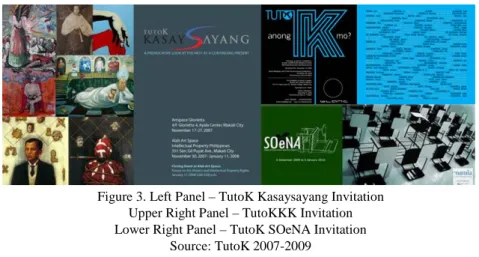
Strengths
As such an equitable development is limited and the practice is dominated by artists privileged by money, class and access to education.”11 In its own way, TutoK tries to balance things out. TutoK members have volunteered their time, effort and talent with each artistic project they have committed to.
Weaknesses
Opportunities
Threat
TutoK PERSPECTIVE
We focus on the task at hand and the objectives to be achieved. The artist as leader, organizer and educator is the artist now called by the present and the future.”19 Indeed, there is still much to be learned and gained from this collaboration.
ENDNOTES
Considering the potential of bamboo veneer as a very strong material in itself, this research also deals with attempts to create new product designs mainly composed of bamboo veneer, respecting the strength and appearance of the material. This paper presents the research process and its results: a prototype of the machine and new product designs made of bamboo veneer.
BAMBOO PRODUCT IN INDONESIA
Traditional Bamboo Use and Production
Bamboo Product Enterprises
This situation has resulted in stagnant sales of bamboo products and a consequent lack of income for bamboo artisans. They are also not ecologically sustainable, as there is almost no proper propagation of bamboo plants, and the artisans merely obtain wild-grown materials from neighboring yards.
The Application of Hybrid Technology in Bamboo Industry
An intervention by product designers, as an effort to improve the performance and appearance of bamboo products, recommended the use of hybrid technology for bamboo product companies in Indonesia, using human craft skills and to some extent machines to assist in the production process. This collaboration created a new genre of bamboo product that uses bamboo veneer as its main 'production material' (the first variable in the hybrid technology application in Table 1) while applying.
VENEERBOO PRODUCT AND MACHINE DEVELOPMENT
Resources
The research team agreed to develop a machine that could peel a bamboo column about 40 cm long, a size that could be controlled by one person in a small workshop, to produce thin layers of bamboo 'skin' or veneer bo. At the same time, the design team designed products from veneerboo to create a new genre of bamboo-based products.
Discussion
The design of the veneerboo machine referred to existing machines, with similar functionality, used for wooden logs and/or bamboo poles on a mass industry scale. Craftsmen with the skill of peeling bamboo[3] were asked to produce a certain amount of veneer for the purpose of making product prototypes based on the design, because the veneerboo machine was still in development.
Result
The veneering machine prototype still faces a number of technical problems, which is common for the first prototype, and therefore it is recommended that the machine be further developed and consider the proper treatment of the bamboo canopy, before and during peeling. A further recommendation concerns the development of a scenario for the marketing and promotion of veneer products, the establishment and expansion of existing rural SMEs and the development of a business model for this new variation of the bamboo product.
ACKNOWLEDGEMENT
Designed to solve eye diagnostic problems, many opticians complain about the impractical process of manual diagnostic products, while patients also complain about the low accuracy of the automatic system. By making observations, the author tries to create a new product development in a new product line, within a semi-automatic system.
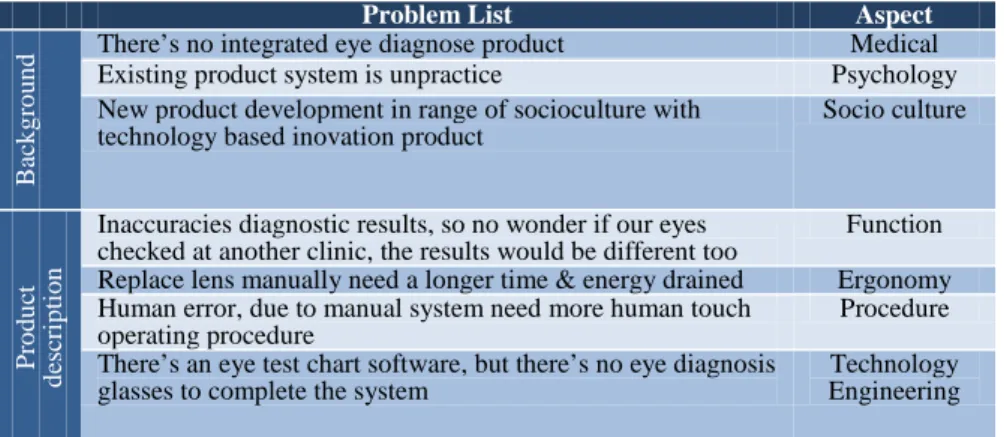
DESIGN CONCEPT
Research and Survey until Design Opportunity
Research & Survey
In addition to the advantages of this software compared to the manual system, it is equipped with such other supporting instruments: Integrated IR sensor for remote control, IR remote control, remote control, RF keyboard and optical mouse, adjustable wall mounting plate and fittings, test card 2000 PRO pre-installed and calibrated red sight. Even when compared to the eye diagnosis in the other classes, diagnostic method that does not require a test card and glasses, which only requires position sensors, shadows are cast on the cornea.

Product Description
Design Specification
Design Positioning
Design Image
SimpelKompleks
R e tro
Design Range
Design Problem
PRODUCT DEVELOPMENT
With the functions of diagnosing a patient with eye diseases such as hypermetropia, myopia, recognizing the ability of cylindrical, it triggers the accommodative reflex of the eye on a moving subject such as moving text.
BIBLIOGRPHY
The Affective Ground
The Possibilities of a Cross-Cultural Dialogue through Process
Affective Terrain is the space opened up by a work of art for a dialogue between the work, the artist and the viewer. Colonization has had a tremendous impact on the region and a sense of place is under negotiation as different cultural groups share the land.
PLACE
This became a major focus of my work as I searched for how settler Australians could be placed in the land and how this could be developed in a visual language. To adapt to Australia, I argue that we can learn through art, both in the making of it and by learning to understand the art made by Indigenous people who have had centuries of dialogue with the land.
SPACE
Place informs the development of the work and the viewing space informs the way the work is experienced. It is a bodily sensation that informs the way we think, the artwork can reveal the relationship between the body and the world.
SPIRITUALITY
Watson's work is horizontal, meaning that the body merges with the land and the work that involves drawing on the ground. There is a tension between this organic artistic feature and the straight geometric cut of the etching plate.
RESPONSE
They develop a space between matter and perception that opens a negotiation with a spiritual understanding of the earth. Indigenous artists have communicated the importance of the earth we all live on and emphasized its active nature.
Chinese Heritage Settlement in Tangerang City which describes Genius Loci through Creative Collaboration
Part of the urban design lexicon is the "Genius Loci", the prevailing sense of place, (Norbert-Schulz and Christian, 1979). So, this article describes the 'Genius Loci' of Old Market - the Chinese old settlement - in Tangerang, from the history and morphology to the building typology and social life.
Physical Description of the Old Market Area in Tangerang City
Perceptions of a place consist of layers of understanding - the establishment in the landscape, its overall structure, the district, the street, the building. They arise from the understanding of the physical and human geography, the history and morphology of past uses, the natural landscape and buildings, both on the site and around it (Urban Design Compendium, 2000).
The History of the Old Market Settlement
Chinese Community Cultural Acculturation in Tangerang
CREATING A CREATIVE SPACE The Harmony of Settlement Pattern
The position of the axis in the old market in Tangerang shows the north-south and east-west axis. The waterfront is in the southern position of the old market area and matches the feng shui philosophy of having the main city gate in the south.
The Harmony of Figure Ground Pattern of Chinese versus Indigenous Settlement and Its Building Form
In the beginning, as recorded in the history of the creation of Tangerang City, the Cisadane River became a means of water transportation, so that the old city of Tangerang is formed as a coastal city. According to Soepandi (2003), Chinatown in the pre-colonial era was a place for cosmopolitan immigrants, playing a major role as a chain center of an important economy for the archipelago kingdom in the era of maritime trade in the area.
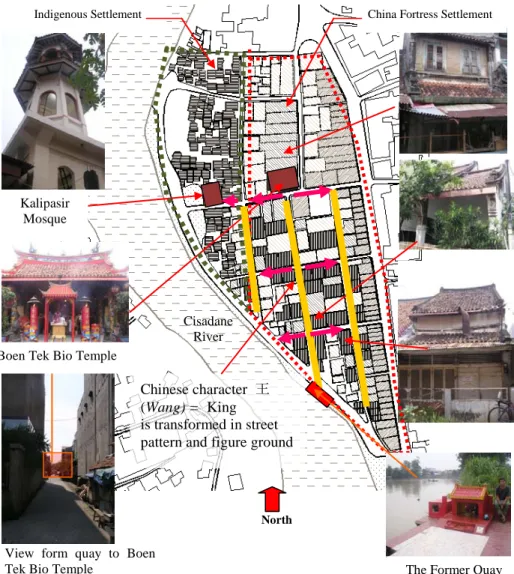
The Harmony of Social and Cultural Life transformed into The Harmony of Physical Setting
In the afternoon at twelve o'clock, in the middle of June, on the Peh Cun days, there is also a ritual with 108 eggs. One of them is the Peh Cun ceremony held in public areas by the Cisadane River in the old market area.
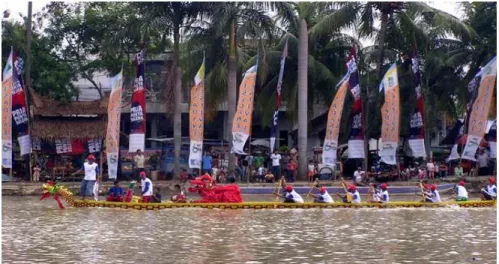
Reading Balinese Traditional Architecture Cosmology
INTRODUCTION Traditional Court Hall
The purpose of this study is to read and describe the meaning of the laying concept of the decorative elements in the bale bale ( Bale Kertagosa. As the building of Bali's cultural heritage, this Kertagosa is very important to read and discuss, especially about discovering the meaning of cosmological laying of those decorative elements, so that the process of creation of bale Kertagosa values become clear.
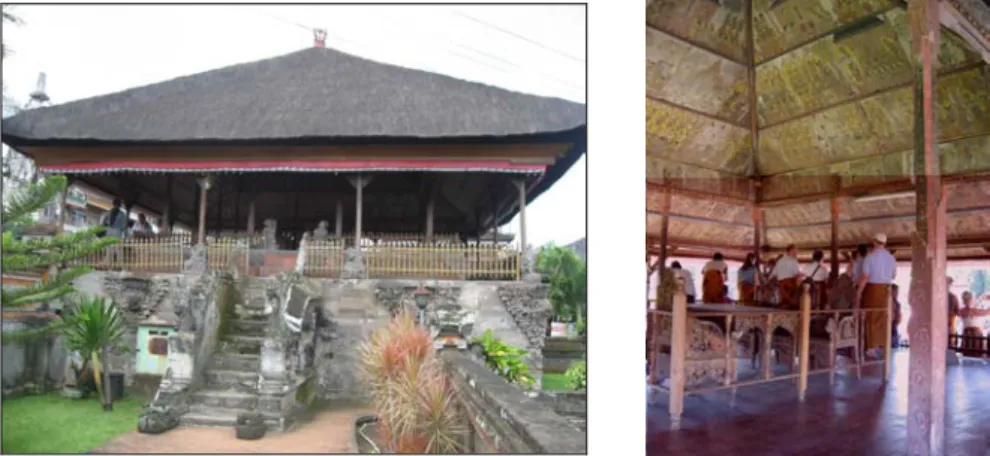
RESEARCH METHODOLOGY
Bali Cultural Wisdom
Cosmology in Balinese traditional architecture
Jagat means world, matter, objects, physical reality whereas the word raya(raja) means great. The purpose of this belief is that nature and everything in it is a unified creation of God, and is associated with harmony and balance.
Sacred Animals and Puppet Paintings on Kertagosa’s Ceiling
Almighty God has three forms of incarnation: (1) pūrna avatāra – flawless avatara, (2) āvesa avatāra – only at a particular time or place, (3) āmsa avatāra – partial/not full incarnation. Here it can be seen that the concept of desa kala patra, hukum karma and Tri semaya were involved in the creation of the painting on the ceiling of the bale dukaran Kertagosa.

Lost in Laneways!
Finding the Hidden Treasures in Melbourne
The inclusion of arts and cultural creativity in the urban regeneration agenda has highlighted the formation of the 21st century city. This paper draws on documents and information from the City of Melbourne about policies, strategies and practices for urban regeneration; supported by literature review and field observations.
THE ESTABLISHMENT OF A CREATIVE MILIEU
Through descriptive discourse, this article aims to explore the emergence of a creative milieu in Melbourne's back alleys; by unfolding specific hard and soft infrastructures connected to it through some public art initiatives and creative collaborations. The first part of the article highlights theories of creating a creative environment, the preconditions (hard and soft infrastructure) necessary for a place or a city to generate creative ideas and inventions.
MERGING CREATIVITY AND URBAN REGENERATION
In his opinion, hard infrastructure is a container, a built environment and a space that provides physical prerequisites or a platform for events. Extensive physical improvements have been made to re-establish the central city as an attractive place to live, work and play, including additional high-quality public spaces and population growth.
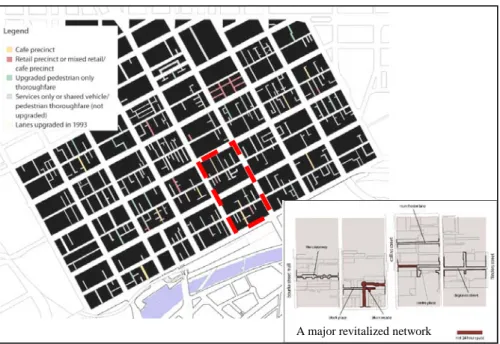
Laneway Commissions
To enhance street-level activity, active facades were added to the facades of buildings, and the types of businesses allowed on the ground floor were also carefully controlled to provide diversity [2][3]. The introduction of the Postcode 3000 project in the 1990s, which encouraged more people to live in CBD, added more function to avenues, secure entrances to new apartments and active facades by adding some balconies.
Designated Graffiti Walls
Creative Spaces and Local Businesses
LESSONS LEARNT FROM MELBOURNE LANEWAYS
2006) Culture and urban regeneration: The role of culture and creativity in the (re)development of the city, Lille, Cultural Network URBACT - Comedia. Contribution to the keynote speech at the international conference Arte-Polis 2 - Creative communities and place-making: sharing creative experiences.
Natural Fibers and Natural Dyes in Indonesian Textile
This paper includes the preliminary research which discusses the revival of natural fibers and dyes in Indonesian textiles. However, natural substances were used as body paint, cosmetics, and color for ceramics and basketry long before they were applied to textile fibers.
Using Natural Dyes in Indonesia
This paper also includes data on the use of natural dyes in several regions of Indonesia and assumptions about the reasons for revival, which require further investigation. The invention of synthetic dyes in 1856 in England by William Perkin quickly replaced the use of natural dyes.
The Preparation of Natural Dyes
In the following years, Adolf von Baeyer (1904) developed synthetic indigo to produce blue dyes (Dean, 1999). The products that are catching the attention of the conscious consumer lately are the textile products made from native natural fibers and with natural dyes.
The Process of Dyeing
The red alizarin usually taken from the mad plant was replaced by a synthetic dye invented by Perkin and two German chemists; Graebe and Liebermann. The awareness of using environmentally friendly products is currently increasing, which causes the emergence of products labeled green design, green product, eco-labeling, eco-fashion and several others.
Various of Kind of Natural Dyes
Textiles Using Natural Fibers and Dyes in Modern Indonesia
They are made to meet the requirements for alternative and environmentally friendly products that have local values. Their production process is undoubtedly simple and short, with new breakthroughs towards efficiency. Visually, they are relatively simple and use one or two colors for efficiency.
Samples Taken From the Collection of Non-Traditional Textile Work Using Natural Dyes
The possibility of using natural dyes as a substitute for synthetic dyes is currently under research. According to recent information, the recycling of natural dyes will involve varied and complex activities.
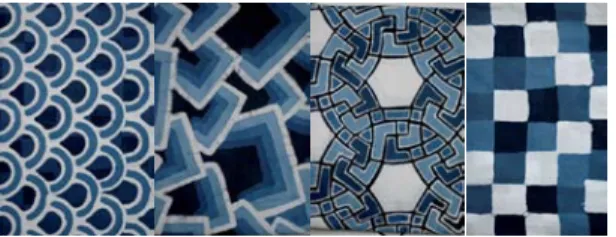
PRELIMINARY CONCLUSION
One of the potential segments for natural dyes is of course the tourism market, which is expected to become the reliable industry of the future.
Translation of Cultural Codes based on
Individual Experience in Making Interior Design
A Phenomenological Semiotic Approach
Kazuya stated that he did not know that reason as his intention in doing architecture is only for the benefit of the user so that people can feel "at home" and use the designed building to the maximum.1 The main thing that was inspired by his statement is that identity is never the purpose of design. Do this enough to develop the sense of belonging and ensure the client is familiar with the design.
APPROACH
Semiotic Approach in Interior Design: Interior Design as Space of Conversation more than Textual Language
Phenomenology of Merleau-Ponty
Through the individual experience – a change in experience designed individually – the translation into concepts, which are already received as a common tendency and pattern, will arise. But even when someone uses the language - using the public pattern - the language written by one person has a different style than others using the same pattern.
INDIVIDUAL TRANSLATION TO DESIGN CODES IN CHINESE PERANAKAN HOUSE
The common space is accommodated in the courtyard and front terrace of the front building. The occupants' activities are used to be kept private as expressed by the solid door and high surrounding walls, while in Lasem, from the informal 'windy gate' (short door panels with holes formed by wooden gratings for ventilation), the residents can see the passing neighbors from their porch and exchange greetings.
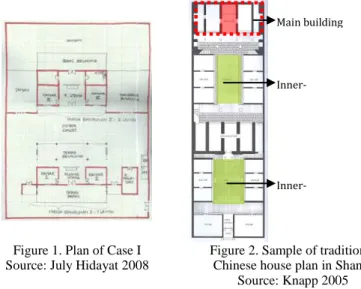
DISCUSSION
The individual translation to the design code is a natural thing and so difference is a necessity. July HIDAYAT involved in the design process of their settlement, under the coordination of architect Mangun Wijaya.
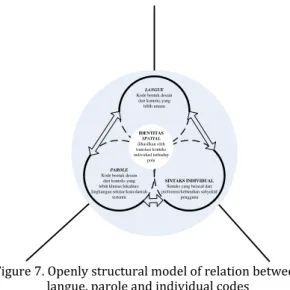
The Meeting of Eastern Hand and Western Mentality
The Understanding of Eastern Mentality and Its Use in the West
The main purpose of my research is to compare the mentality of people there with the mentality of Western people. Eastern people, poor in the interpretation of Western civilization, live with great emotional and spiritual reserves.
MY RESEARCH
PARALLELS BETWEEN MY OWN WORKS AND INDONESIAN VISUAL EXPERIENCE
However, they do not set up the building in the axis of the main streets to show off and so that only their self-fulfillment can be seen, but it is placed in such a way that it becomes an organic part of the neighborhood. There is no copying of the neighbors and processing of solutions taken from international magazines, widespread in the Western world.
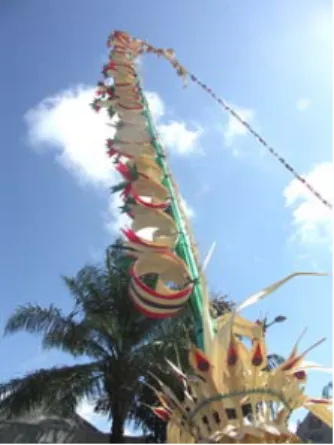
Criticism
Further Parallels
I asked the political leaders to be very careful in giving in to the attractive phenomena of globalization. This circulation means in the long run the individual face of Indonesia and the rescue of the Eastern mentality.
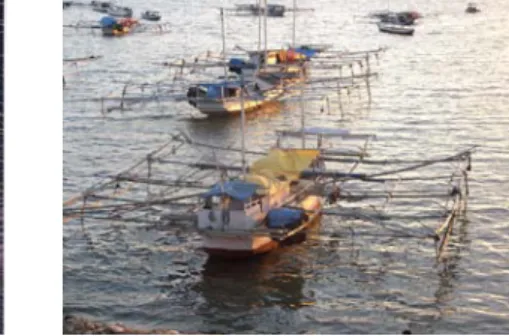
This phenomenon can be partially attributed to the unbalanced focus of the placemaking process on physical aspects, while as described by Seamons (2003), the characteristics of a place are based on three aspects, viz. The next two sections in this paper will respectively focus on the concept of place setting and defining folklore in its quality as an intangible aspect.
PLACEMAKING AND ITS ASPECTS
The possibility that institutionalization and the resulting simplicity of the process of spatial design have contributed to this phenomenon, where the treatment of different places is becoming increasingly standardized and formulaic, is worrying. This paper argues that the non-physical features of an area specific to a local community, particularly creative reinterpretations of folklore, can serve as a common background against which place can be constructed, enhancing and giving a new layer of meaning and experience to the place-making process.
FOLKLORE
These identities may be newly constructed by urban designers, or alternatively they may already exist in the community that inhabits the place before a particular placemaking initiative is initiated. Trying to set a new unique identity for each place from scratch is a difficult, and often counterproductive, task, as it may clash with the current identity of a particular place.
CREATIVE REINTERPRETATIONS OF FOLKLORE AND ITS APPLICATION IN THE PLACEMAKING PROCESS
Azisa NOOR As stated by Jacobs (2004), the incorporation of Folklore into elements of design for the built landscape can more easily capture the essence of a landscape setting that resonates in the collective soul of the population to which they are directed. It is important that we see two separate but related mechanisms of the manifestation of folklore in placemaking.
Public Awareness of the Cultural History of the City
Each time leaves a trace of culture in the form of physical or cultural artifacts that live in the community. Increased participation of communities and UKM in the protection, development and utilization of regional culture;.
Community Based Creative Place in the Historic Area
In connection with the Festival of Malang Kembali, many activities are expected to improve the awareness of city government and the community in maintaining the quality of urban environment based on historical and cultural city.
Malang Kembali Festival
Meanwhile, in the performance of Malang Kembali III, the public remembers who their ancestors were since 760 AD. How is public awareness going in the city after 4 years of organizing the Malang Kembali festival.
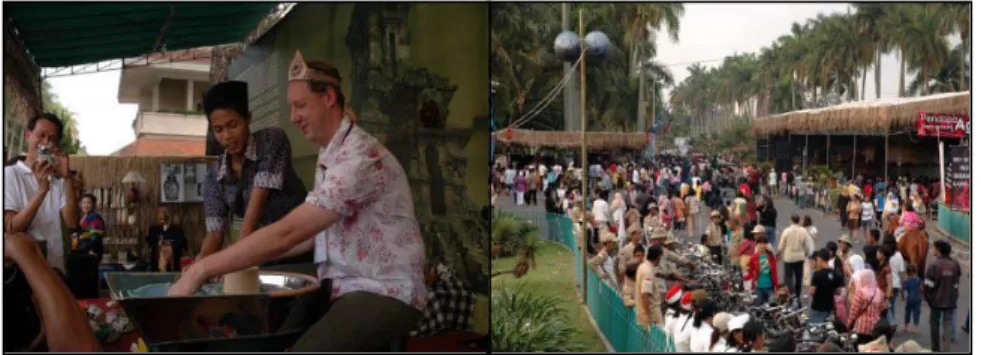
FACTS ON THE GROUND
The Reduced Area of Green Space
Meanwhile, according to data from WALHI, the remaining green space is currently only 2.8 percent of the 110.6 square kilometer city of Malang. Based on data from the agency in Malang, Malang than the total area reaching 11005.66 hectares, the forest area in the city until now only 71.623 hectares.
Law Enforcement against Ancient Historical Buildings
Malang Town Square development in watersheds in former SNAKMA - APP at Jalan Veteran,. While the area of the wake was almost as high as 60 percent of the total luasan.8 means that more and more trees are disappearing from the city of Malang, where the city of Malang on the antiquity of this initially by Dutch architect Thomas Karsten labeled or nickname of Garden City.(ardhaneswimbardhi, 2009).
The Lack of Attention at the City History Museum
Visual Analysis of Bandung’s 200 Years Anniversary
Brief History of Bandung’s Nicknames
Visual Analysis Method
VISUAL ANALYSIS OF BEST FIVE IN BANDUNG’S 200 th ANNIVERSARY LOGO
Analysis The word "200 tahun" uses sans serif, which gives string and similar with "Bandung" in size and color. Herry Hudrasyah of ITB School of Business and Management, Bandung for his support in providing high-resolution images of Bandung's 200th anniversary finalists' logos.
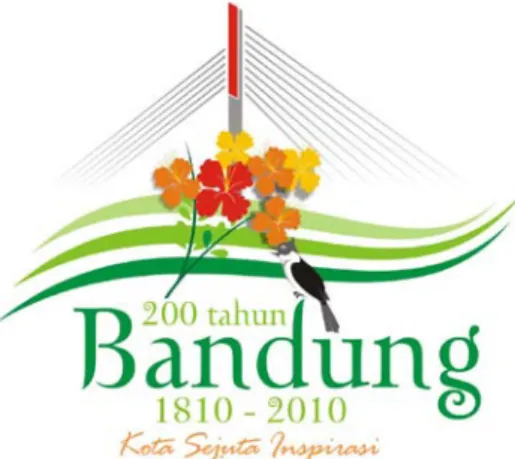
A Case Study in Creative Collaboration from Various Disciplines in Bandung
The paper is a first person point of view from Pixel People Project, author of Batik Fractal. The last part will show how Bandung is related to Pixel People Project by analyzing the coverage of the mass media.
RESEARCH DEPARTMENT
PROOFING, MODELING AND ALGORITHM
It also shows that the model and algorithm to measure Fractal Dimension is correct and capable of reading images and their representations.
DESIGN DEPARTMENTS
JBATIK SOFTWARE AND BATIK FRACTAL PRODUCTS
Working with Various People: Producing Batik Fractal
The Design Department should also think about the science and business aspect in addition to the design and technology aspect. Most designers are also eager to hear what the Business and Publishing Department wants, such as markets, storyboards, simple intuitive interfaces, etc., so that the Business and Publishing Department does not have too much trouble handling the markets.
BATIK FRACTAL IN A BUSINESS PERSPECTIVE
PANJAITAN is constantly becoming one of the tools used to develop batik patterns and develop products for small and medium-sized businesses in every area in Indonesia. The commitment of national companies (BUMN: Badan Usaha Milik Negara) to their CSR (Corporate Social Responsibility) program will also help to broaden the use of the software among the previously unreachable traditional batik worker.
CONTRIBUTION OF BATIK FRACTAL IN CREATING BANDUNG’S IMAGE AS A CREATIVE CITY
The topic frequency distribution descriptively shows that Batik Fractal's coverage is dominated by the topic of Bandung than any other city. The coverage of Batik Fractal by the mainstream mass media shows that Batik Fractal is considered a worthy national issue.
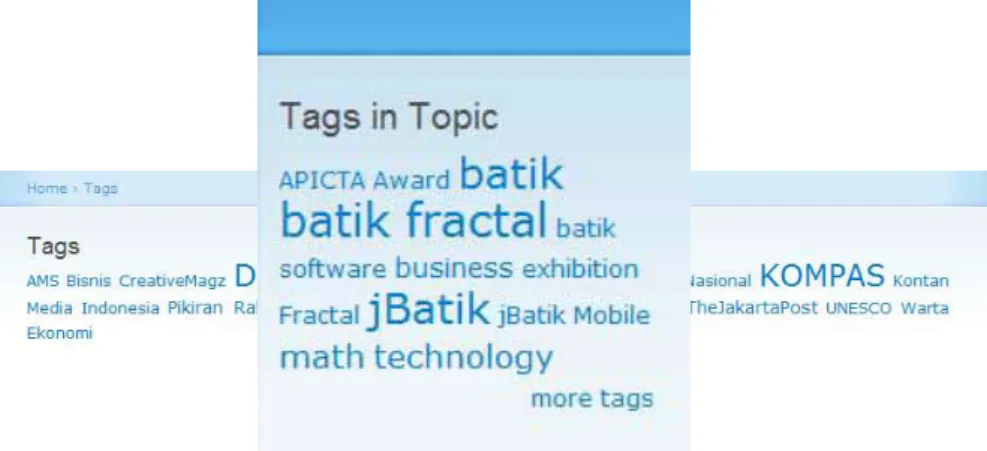
Fractalization of Traditional Batik Ornament and Its Challenges in the Modern Style Sector
BACKGROUND
AESTHETICS OF TRADITIONAL BATIK
However, for certain groups (the modern ones) mystical implications of batik do not really exist and that there is no obligation to believe in them; it is limited to particular relevance to the art field. On the one hand, tradition is the continuity of the past; on the other hand, it is evolutionary because it relates to human evolution and the ever-changing environment.
BATIK FRACTAL IS NOT AN ALLIENATION ATTEMPT BUT AN INNOVATION
Therefore, when looking at mystical symbols, there must be differences, whether it is just for art, or whether it implies mystical nature, as found in the authentic symbolism of Balinese cloth poleng or its function in the interior of some cafes. This in turn leads to interpretation (adaptation) of each phase of the past, present and future culture in accordance with the spirit and imagination of their times, whether in the form of additions, simplifications or reductions of the existing patterns.
The first half of the 20th century saw another phenomenon known as the era of postmodernism. It is this haphazard spirit that may have contributed to the devaluation of the authentic images and content in the world of batik as it is about to be drawn into popular areas.
STYLE: FROM BUBBLE UP TO INDIVIDUAL
Haldani DESTIARMAND The spirit of fashion at the time was 'celebration of the new', 'singularity', and 'stepping down' or a process of diffusion from elite society to mass society, supported by the great discoveries in the era of the industrial revolution in the field of textile technology and textile product (TPT). The so-called transfer and shift of the orientation from 'Paris-based' (exclusivity) to 'Italy or London-based' (world market: Diesel, Benetton) has actually changed the philosophy of 'us and them' into 'us', in which multiplication of styles becomes the modification of the authentic styles following the trend of street tribes.
STYLE: CRITICAL PHASE
This era is close to the spirit of pluralism and eclecticism through the spirit of breaking all the rules that grew under the subculture (street rules) that encouraged industries to practice the rules of fashion by performing the 'bubble up' towards their styles. It is at this complex intersection that Chinese and Malaysian Batik take advantage of the polychromatic nature of the style, while batik-fractal attempts to weave together this chaotic ideology into an aesthetic discourse.
BATIK FRACTAL: NEW CHANCES FOR DEVELOPMENT
Batik Fractal in this case seeks to increase the life experience of the Indonesian nation, which will automatically serve as the soul of every piece of batik in the future. Some examples of the end products of batik exploration through the Batik Fractal method.
ILUSTRATION
WIDAGDO (2005) Desain dan Budaya, ITB, Edisi Revisi. 1989) Sejarah Desain dan Sejarah Desain, London, Pluto Press.
Art and Design Festival’s Networking Collaboration
The Place Making
INTERNATIONAL ARTS WORLWIDE
ART CITIES AND ITS CULTURE
Sustainable and ongoing art events and happenings within the city are interconnected, then organized within art activities, seasonal events and holidays to create a comprehensive exhibition space planned throughout the year.
MIAMI AND BASEL
Miami - The City Growth
The Growing Markets
It is the principal city and center of the South Florida metropolitan area, which had a population in 2008 that ranked 7th largest in the US. By 2008, the population of Miami's urbanized area had grown to become the fourth largest urbanized area in the United States, behind New York City, Los Angeles, and Chicago.
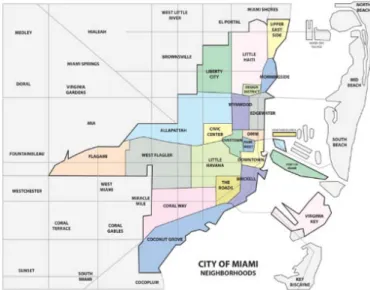
Basel - International City of Art
ART BASEL – MIAMI BEACH
Information about the Art Basel event as a tourist attraction is supported by the Basel Tourist Board, City Marketing of Basel and the Swiss Ministry of Tourism. As art cultures have also flourished in Miami in recent decades, this brings high-quality stakeholders and business people to the city.
Continuous Schedules – Creating Endurance
During the events period, the Art Basel is supported by City/Art Museums, such as: Architekturmuseum Basel, Fondation Beyeler, Jean Tinguely, Kunsthalle Basel, Kunsthaus Baselland, Kunstmuseum Basel, Museum für Gegenwartskunst, Schaulager and Vitra Design Museum. In collaboration with Art Basel Switzerland, Art Basel Miami Beach goes well every winter to accommodate the needs of the creative associations and celebrate the art-related festivities.
INTERNATIONAL NETWORKING
They present their current and future projects, report on their experiences and comment on the challenges they face, providing an inside view and opening an opportunity for dynamic and inspiring dialogue with the audience and other artists.
Collaboration - Place Making that Follows
Miami Design District and Wynwood Art District
The formation of the new communities surrounding these two cities and their sustainable urban development depends on the continuity of the art events and their growth. As a further discourse it is held to get a much better understanding of collaborative aspects of the Art Festival based related developments.
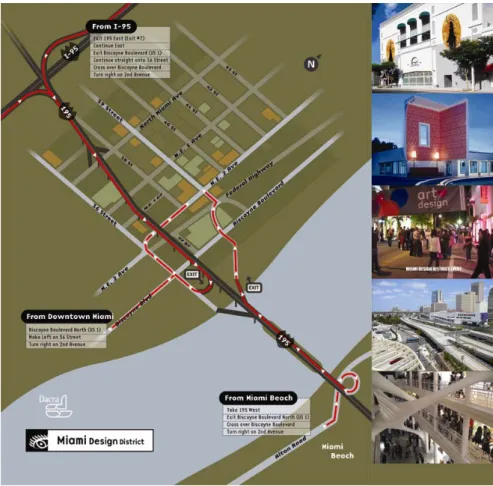
Reducing Crime by Creating a Community Collaborative Space: Case Study of Alpina in
Bandung: Best Choice in Higher Education
SOCIAL PROBLEMS ARISE
Antisocial Behavior and Detachment from the Community
Boarding Students as Mature Adolescent
Social Pressure vs. Freedom Enthusiasm
ALPINA AS COMMUNITY COLLABORATIVE SPACE Creating Natural Defensible Space
Space with Surveillance that Functions as Social Control
Newman also suggested that by creating an effective defensible space, the security of the environment could rely on community self-help. For Newman, Jane Jacobs, in her feminist approach to "Eyes on the Street Theory," said that environmental safety can be improved by "watching the street" by showing examples of street-facing commercial and public spaces.
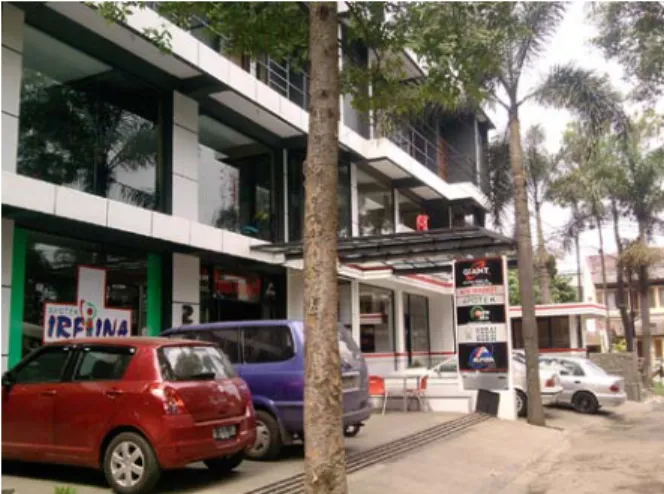
Social Bond Construction in Community Collaborative Space
The involvement of owners, tenants and customers is built within the business transaction in the collaborative space. A lesson we can all learn from Alpine as such an example of a community collaborative space in Cisitu is that community collaborative spaces can become a natural defensive space in a neighborhood.
Creative Programming Partnerships and the Creation of Spaces for Reciprocity in a
Local Indigenous Metropolitan Festival
People will introduce my methodology, conceptual outline and briefly cover the Aboriginal history of the area; second: Place will present the role of City of Port Phillip as festival host; and third, Gathering will present an overview of the festival's creative programming partnerships. During the presentation, I will briefly discuss methods of knowledge transfer and cultural maintenance practices at the local level.
PEOPLE Methodology
My research practice included facilitating an Indigenous festival program, the Yalukit Willam Ngargee: People Place Gathering, held at a major contemporary metropolitan meeting place and organized by the local government, the City of Port Phillip, in collaboration with key community stakeholders. Finally, it summarizes how a local Indigenous festival, organized by a local government agency, can benefit society as a whole through mutual practices.
Conceptual Outline
For Aboriginal peoples living in rapidly changing metropolitan places, access to the customary foundations that Thompson outlines can be extremely difficult. This may be due to lower socio-economic living standards, racism, loss of traditional ceremonial, hunting and gathering homelands or institutional barriers that hinder native's spiritual practices.
Aboriginal Community
City of Port Phillip’s Role as Festival Host
Festival Structure
Space Creation through the Festival
GATHERING
Creative Programming Partnerships
Digital Media and Information Technology harnessing Creative Collaboration
The Implication of Electronic Banking
User Preferences to Metropolitan Development
Case Study: Bandung Metropolitan Area, Indonesia
A modern banking service can support those specific functions of each activity center as a new trend in facilitating place-making. Finally, it is expected that a modern banking service, which is based on the use of information and communication technology, can reduce the dependence of the peripheral and rural area on the city center through online service, as it will help to reduce the flow of transport between activity centers.
ISSUES, OBJECTIVE, AND SCOPE
Take an example of the use of ICT in banking services or we know as electronic banking to improve accessibility to get banking services especially for urban people. In the broader context, a study of electronic banking is a special topic in urban identity and urban infrastructure.
IDENTIFICATION OF BANKING SERVICE IN THE CITY OF BANDUNG
THE PREFERENCES OF ELECTRONIC BANKING ACTIVITY IN METROPOLITAN BANDUNG
The visit to the bank branch can be considered as quite an important need for the customers. The availability of the ATM meant that the respondents went to the bank branch less often, but went more to the ATM.
ICT USAGE AT LARGE
Regarding the travel pattern of the respondents, the trip to the bank branch is evenly distributed between the main destination and the peripheral destination. Among other activities, customers could visit the bank branch or the ATM site.
BANK SERVICES LOCATION SELECTION
They can get easier transactions, and only customers who are familiar with technology that optimize the use of electronic banking services. However, customers are still not familiar with this service, they are afraid to use the service.
IMPLICATION TO CREATIVE COLLABORATION AND PLACE-MAKING
At this time, the condition of banking services in Bandung area, although customers have high access to technology and bank is already developing other delivery channels to reduce transaction activities in bank location, there is no significant decrease in customers to visit to bank location.
